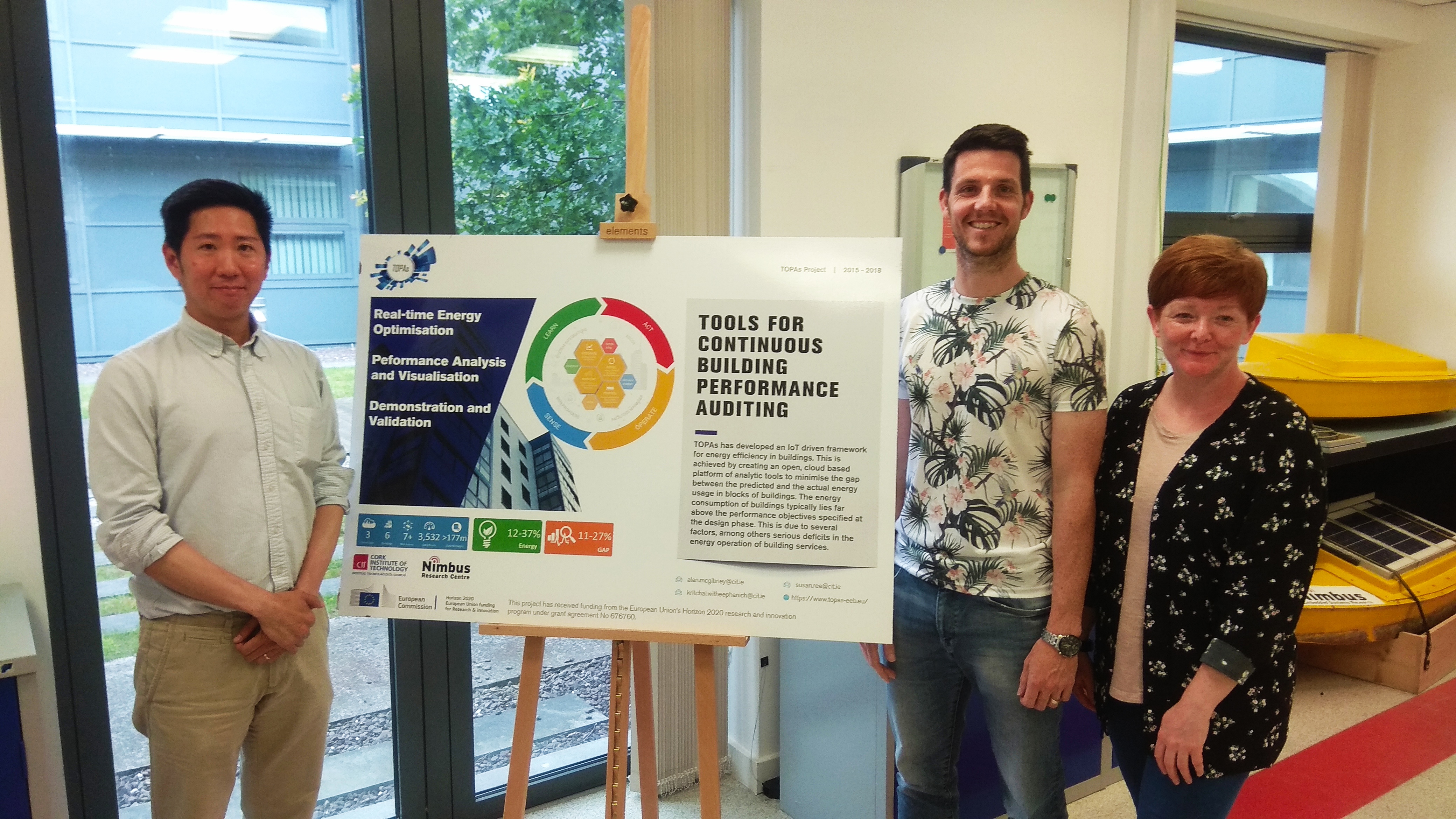Cork Institute of Technology
-
0 comments

About the innovator
The NIMBUS Centre for Embedded Systems Research at Cork Institute of Technology conducts industry driven research in the area of Internet of Things (IoT) and Cyber-Physical Systems (CPS) with applications in smart buildings, energy efficiency, smart cities and communities and Industry 4.0. NIMBUS, with 40 researchers and engineers, is managed by staff with extensive national, international and industry R&D experience in national, EU and industry-funded research projects. The focus is on creating multidisciplinary teams to address societal challenges targeting fundamental advances in Digital Platforms, Future Networks, Cyber Secure Systems and Advanced Digital Skills.
Nimbus Center on Twitter
What is the innovation
The TOPAs (Tools for Continuous Building Performance Auditing) project investigated the use of Internet of Things to support building energy management post occupancy. The solution facilitates the extraction, processing and analysis of energy performance data across a large portfolio of buildings. As part of this project the CIT Nimbus Centre implemented a user centred design process to engage with key stakeholders along the value chain to design and develop a set of reusable data processing and visualisation components. These can be configured to represent the most pertinent information (KPI, faults, alerts, usage patterns) extracted from buildings and provides insight, decision support and continuous energy auditing to allow a building manager react quickly to the dynamics of their buildings. The solution is agnostic of the underlying building systems, and provides open interfaces to make the integration, aggregation and analysis of energy performance data quicker and easier over traditional building management systems.
Assessing energy performance is still largely a manual process where data has to be extracted from multiple sources, processed, aggregated and interpreted by an individual. Leveraging IoT technologies has made data management a much more straightforward task and allows for the automation of energy performance assessment and enables a mind shift of annual energy audits to continuous performance auditing that captures the dynamics of a building.
The innovation has been developed to TRL 7 and has been deployed and evaluated across three independent sites.
Out of the lab. Into the market
Having end users at the focal point of the development was critical to the success of this project. By applying User Experience (UX) design methods provided an explicit understanding of users/customers, task and environments to provide rigorous insights into audience expectations and behaviours to subsequently motivate and encourage participation in energy management. Rapid prototyping under real world conditions and contextual enquiry at the demonstration site all contributed to developing a solution that addresses the major priorities of end users when targeting energy reduction.
The Cork Institute of Technology college campus was one of the demonstration site for the project. As a public body CIT has committed to a 33% reduction in energy use from 2009 (base year) to 2020, there was a need to develop tools and methodologies that links building performance models with operational building management systems and measuring technologies to improve both the accuracy of the prediction models and the in-use performance of the buildings. The TOPAs solution enabled the building manager to have a single portal to visualise energy performance rather than 4 independent systems. The developed tools are easy to learn, use and configure and supports data management for multiple buildings. It also allows for the integration of third party services (e.g. prediction modelling, Air quality monitoring) through open interfaces. The continuous auditing approach supports CIT in its implementation of the ISO 50001 standard to ensure it can achieve its energy efficiency targets. Since the deployment of the TOPAs solution the total primary energy consumption was reduced by 19%.
Benefits of participation in Horizon 2020
By participating in this programme, the Nimbus centre has been able to increase its research capacity and knowledge transfer in the are of energy efficient buildings and districts. It has strengthened our network of Academic, SME and multinational partnerships across Europe. As part of the framework programme we have developed a suite of digital technologies that we are leveraging to support digital transformation across the energy, education and transport sectors. Through the collaborative projects we have gained significant experience and capabilities in engaged research with the user being at the focal point of our technology innovation.
This innovation was funded via H2020 project Topas
Team behind the innovation
/futurium/en/file/topas-cit-teamjpgtopas-cit-team.jpg

Video

